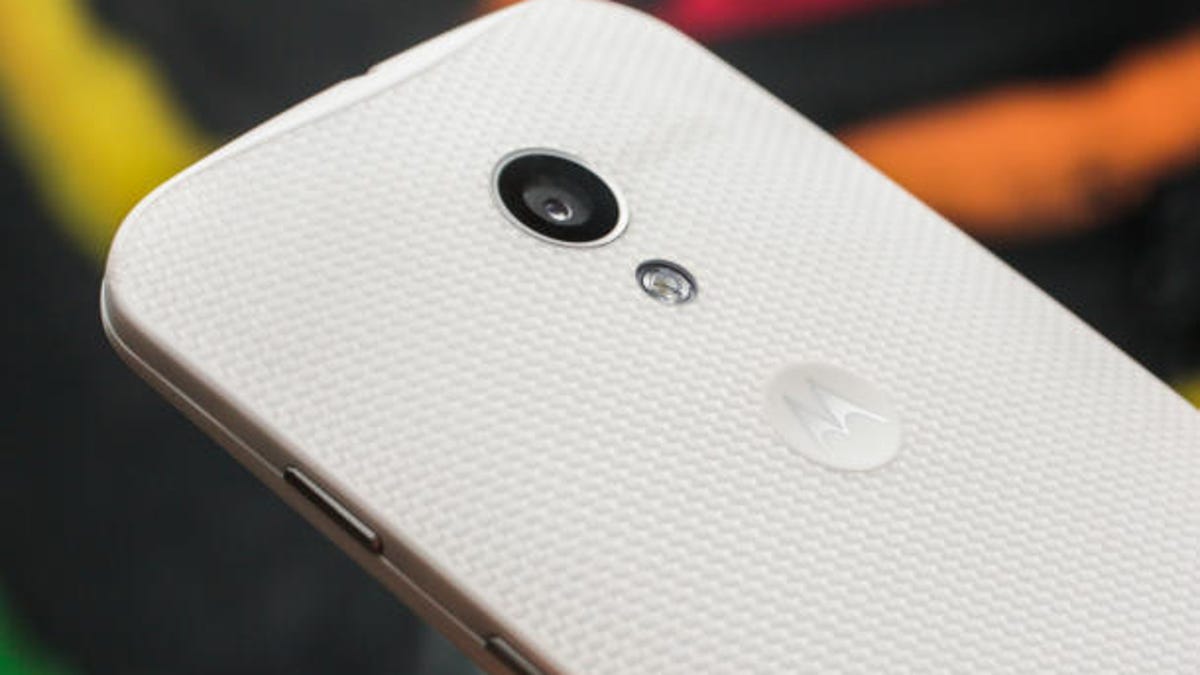Five ways Lenovo could outdo Google in remaking Motorola
Motorola's recent smartphones are good, but Lenovo has the chops to make them truly great.

Let's face it, Motorola's freshest crop of smartphones is pretty impressive, but still misses the mark. Even with Google's vast financial resources and software know-how, Moto devices haven't exactly sold like hotcakes. Now that Google has decided to hand off Motorola Mobility into the eager palms of Chinese hardware giant Lenovo, Moto could enjoy a much-needed course correction.
I know that on the surface Motorola's fate looks grim given the recent turn of events. It's not often pretty when a struggling company gets gobbled up by a competitor. That said, Lenovo has many product-making talents Motorola could truly benefit from. From a similar affinity with stellar design standards, to a demonstrated ability to uphold the integrity of a well-respected American brand, there are reasons to think Lenovo's play for Motorola could mightily improve how the legendary phone company makes mobile devices.
A fresh influx of parts
Last year Motorola launched a slew of compelling Android handsets billed as setting the world on fire with futuristic features. Unfortunately, though, while products such as the company's Moto X and Droid Maxx boast many innovative capabilities, in actual processing power these phones can't stand toe-to-toe with the likes of Samsung's Galaxy Note 3 and Galaxy S4, LG's G2 and Nexus 5, or the lovely HTC One.
If Lenovo's recent phone announcements at CES 2014 are any predictor, however, I'll bet that handsets born of this new merger will be quite well-appointed. For instance the Vibe Z is expected to pack a top-notch 2.2GHz quad-core Snapdragon 800 CPU. That's a far cry from the underpowered X8 computing platform Motorola currently tucks inside all its Droid phones on Verizon and its Moto X flagship.
The screen on the Vibe Z appears to also put Motorola phone displays to shame. At 5.5 inches and pumping out a crisper 1080p resolution, the Vibe's IPS LCD will likely be brighter than Motorola's current phone screens, which top out at 5 inches and 720p resolution. Of course I do like the high contrast of Moto's preferred OLED display technology (found in the Moto X and Droid Maxx).
Eye-to-eye in design ethos
No doubt due to the influx of legacy hardware engineering skills and patents from buying the IBM ThinkPad brand, Lenovo laptops have consistently boasted excellent keyboards. Also key here is that Lenovo has shown a similar reverence for build quality to match the loving craftsmanship of the Moto X.
I mean, there's a reason why I, like many others I'm sure, salivated over rumors of a possible Lenovo buyout of BlackBerry a few months back. No matter how much you might knock the company's operating system and software, BlackBerry devices have always featured superb industrial design and a premium feel -- at least until the Z10, that is. If Lenovo could effectively cross-pollinate with Motorola in terms of design, we might very well see a force that Samsung, Apple, or even HTC wouldn't want to tangle with.
Improved camera prowess
Motorola has made many attempts to create phones with enviable cameras. Unfortunately its past Droid Razr handsets were a real letdown in the image quality department and the more modern Moto X also snapped photos that failed to knock my socks off.
I have a feeling that's all about to change. Lenovo's upcoming Vibe Z should arrive wielding a camera with the sharpness of a crisp 13-megapixel sensor. It should be a welcome upgrade to the softer photos captured by the 10-megapixel sensor you'll find in Motorola's 2013 phone lineup.
A proven history of acquisition
I'm sure there are plenty of doubters out there who don't see Lenovo's acquisition of Motorola as being likely to lead to success. I, on the other hand, feel that Google's sale of Motorola to Lenovo isn't as troubling as it might sound. Lenovo's snap-up of the phone maker closely echoes a similar corporate purchase it made a decade ago, the company's buyout of IBM's PC business.
Like IBM and most notably its legendary ThinkPad laptop brand, Motorola is an American household name. I remember folks were dubious back then about Lenovo's chances of pulling the IBM PC unit merger off. Unlike in the cases of spectacular failures such as Palm's sale to HP, though, Lenovo has consistently shipped quality portable PCs year after year that I'd argue are certainly worthy of the vaunted ThinkPad moniker.
The drive to succeed
If there's one attribute Lenovo has in droves, it's ambition to capture a greater share of the US technology market. The company said in May of last year that it would find a way to sell its smartphones in America within a year. With this recent grab of Motorola, Lenovo appears to be right on track.
The fact that Lenovo is the fifth-largest smartphone vendor on the planet, with most of its sales in China, and that it just said it would snatch up IBM's server division for $2.3 billion, further speak to the tech giant's global aspirations with eyes keen on doing even more American business. Apple and Samsung, I think you'd best watch your back.

